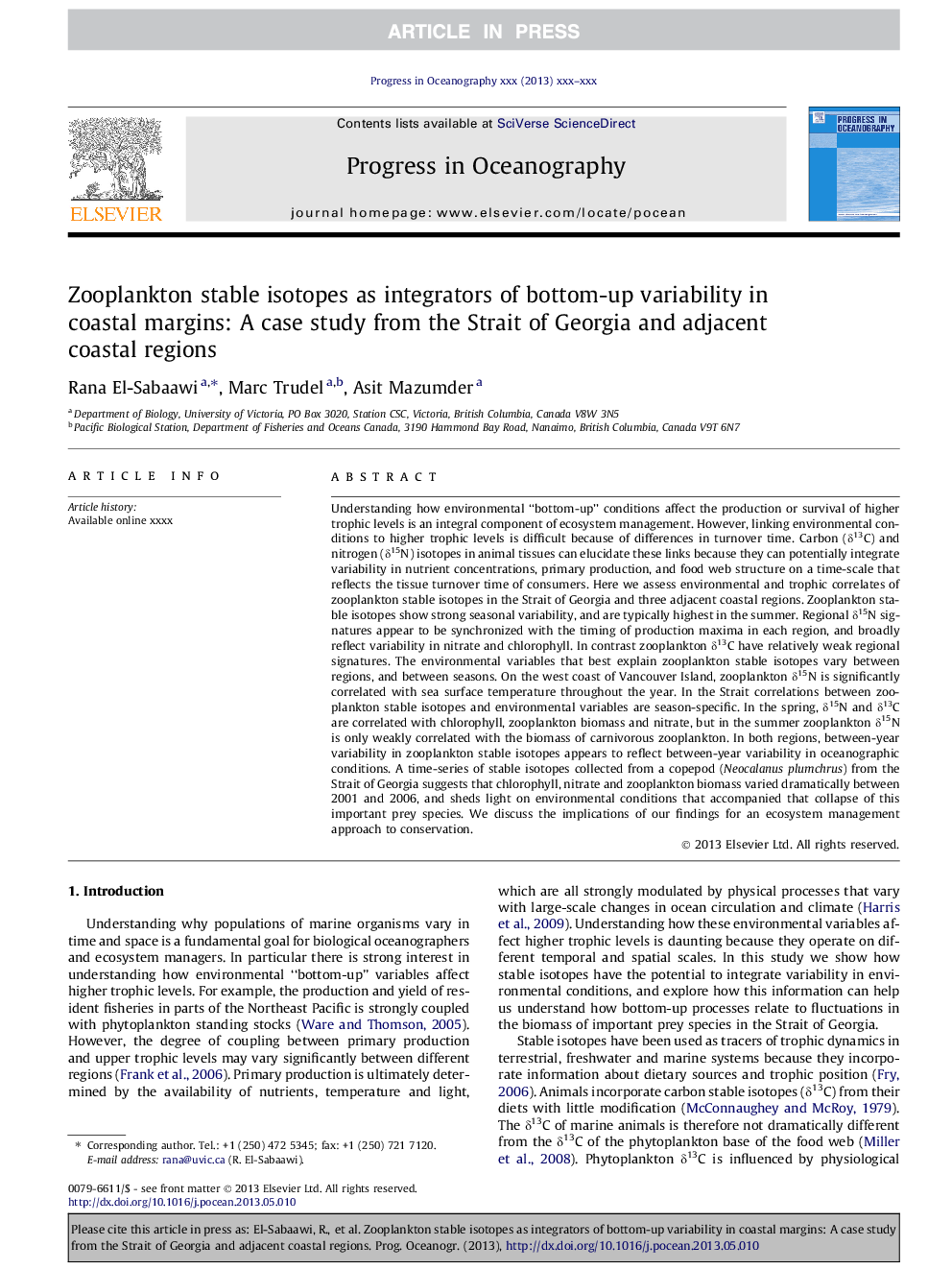| کد مقاله | کد نشریه | سال انتشار | مقاله انگلیسی | نسخه تمام متن |
|---|---|---|---|---|
| 6388751 | 1627940 | 2013 | 14 صفحه PDF | دانلود رایگان |
عنوان انگلیسی مقاله ISI
Zooplankton stable isotopes as integrators of bottom-up variability in coastal margins: A case study from the Strait of Georgia and adjacent coastal regions
دانلود مقاله + سفارش ترجمه
دانلود مقاله ISI انگلیسی
رایگان برای ایرانیان
موضوعات مرتبط
مهندسی و علوم پایه
علوم زمین و سیارات
زمین شناسی
پیش نمایش صفحه اول مقاله

چکیده انگلیسی
Understanding how environmental “bottom-up” conditions affect the production or survival of higher trophic levels is an integral component of ecosystem management. However, linking environmental conditions to higher trophic levels is difficult because of differences in turnover time. Carbon (δ13C) and nitrogen (δ15N) isotopes in animal tissues can elucidate these links because they can potentially integrate variability in nutrient concentrations, primary production, and food web structure on a time-scale that reflects the tissue turnover time of consumers. Here we assess environmental and trophic correlates of zooplankton stable isotopes in the Strait of Georgia and three adjacent coastal regions. Zooplankton stable isotopes show strong seasonal variability, and are typically highest in the summer. Regional δ15N signatures appear to be synchronized with the timing of production maxima in each region, and broadly reflect variability in nitrate and chlorophyll. In contrast zooplankton δ13C have relatively weak regional signatures. The environmental variables that best explain zooplankton stable isotopes vary between regions, and between seasons. On the west coast of Vancouver Island, zooplankton δ15N is significantly correlated with sea surface temperature throughout the year. In the Strait correlations between zooplankton stable isotopes and environmental variables are season-specific. In the spring, δ15N and δ13C are correlated with chlorophyll, zooplankton biomass and nitrate, but in the summer zooplankton δ15N is only weakly correlated with the biomass of carnivorous zooplankton. In both regions, between-year variability in zooplankton stable isotopes appears to reflect between-year variability in oceanographic conditions. A time-series of stable isotopes collected from a copepod (Neocalanus plumchrus) from the Strait of Georgia suggests that chlorophyll, nitrate and zooplankton biomass varied dramatically between 2001 and 2006, and sheds light on environmental conditions that accompanied that collapse of this important prey species. We discuss the implications of our findings for an ecosystem management approach to conservation.
ناشر
Database: Elsevier - ScienceDirect (ساینس دایرکت)
Journal: Progress in Oceanography - Volume 115, August 2013, Pages 76-89
Journal: Progress in Oceanography - Volume 115, August 2013, Pages 76-89
نویسندگان
Rana El-Sabaawi, Marc Trudel, Asit Mazumder,